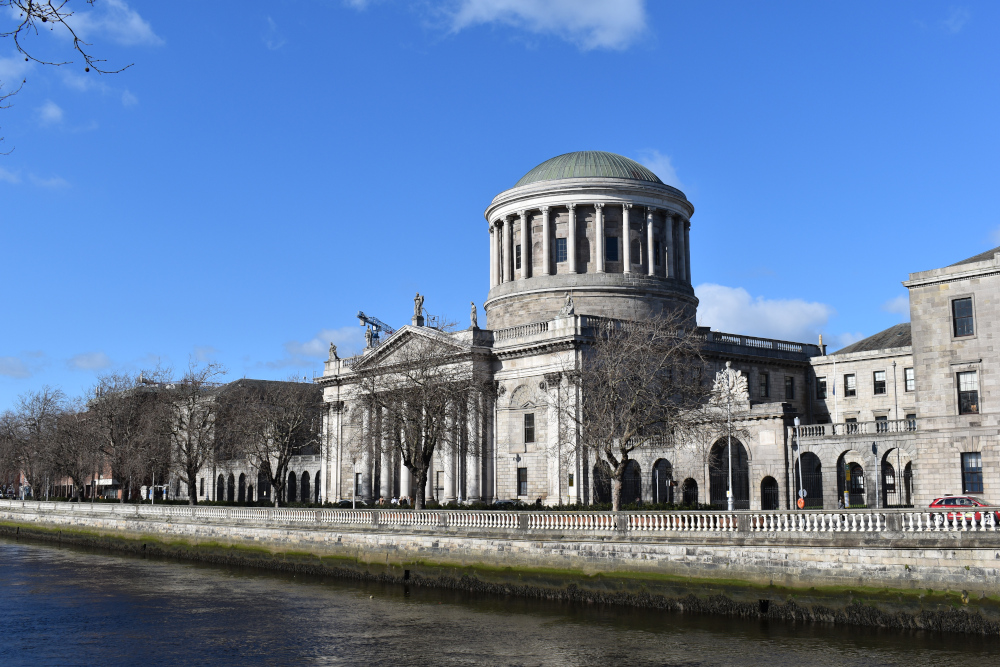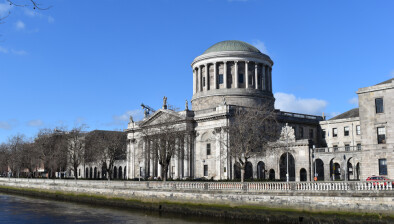High Court: Developer’s claim of maintenance and champerty against planning objectors struck out as bound to fail

The High Court has struck out a developer’s proceedings against planning objectors which alleged the tort of maintenance and champerty. It was alleged that the defendants were canvassing for illegal funding in their challenge the developer’s planning permission for a strategic housing development in Killiney, County Dublin.

About this case:
- Citation:[2022] IEHC 443
- Judgment:
- Court:High Court
- Judge:Ms Justice Emily Egan
The developer had also issued a motion seeking to compel the defendant’s solicitor to identify the name and address of all parties funding or contributing to the judicial review. Delivering judgment in the matter, Ms Justice Egan held that she had “no hesitation whatsoever” in striking out the proceedings as bound to fail, since the defendants were entitled to canvass local residents for support in the judicial review.
Background
In July 2021, Atlas GP Limited was granted planning permission for a strategic housing development in Killiney, County Dublin. The defendants were local residents opposed to the development. In August 2021, the defendants issued judicial review (JR) proceedings seeking to challenge the permission. The leave application was adjourned to after the commencement of term in October.
In September, Atlas was served with a courtesy copy of the JR proceedings. Additionally, the developer became aware of a flyer which was circulated in the local community which sought support for the JR proceedings. The flyer was circulated by the Watson Killiney Residents Association and gave information about the planning permission and proposed development.
In particular, the flyer stated that its legal team believed that there was a strong case for overturning the permission and that the cost of JR proceedings was approximately €60,000. The flyer sought community support to assist in raising funds for the JR proceedings.
Atlas wrote to each of the applicants claiming that the flyer was defamatory and sought an apology. The defendant’s solicitor rejected this assertion. Atlas sent further letters seeking the names, addresses and descriptions relating to the named residents’ associations and details of funding. The defendant’ solicitor refused to provide the information because he did not act for the associations and did not have the information.
Atlas issued defamation proceedings against the JR applicants in September 2021. They also issued land law proceedings against two of the JR applicants. The present proceedings claiming damages for maintenance and champerty issued in November 2021, which was before the defendants obtained leave in the JR proceedings. The defendants were granted leave in the JR proceedings in December 2021 and successfully resisted a strike out application by Atlas.
Finally, Atlas also issued a motion seeking an interlocutory injunction restraining the defendants for taking any steps in the JR proceedings pending the determination of the champerty proceedings. The motion also sought to compel the defendants to supply the names and descriptions of all parties funding the JR proceedings.
The defendants issued a notice of motion seeking to strike out the champerty proceedings as bound to fail and issued for the improper purpose of harassing and punishing the defendants for the JR proceedings. During the first day of the hearing, Atlas withdrew its interlocutory application.
Atlas submitted that a statement of claim had not been served in the champerty proceedings and it would be extremely unusual for a court to strike out proceedings prior to its delivery. Atlas also relied on the flyer and the alleged failure by the defendants’ solicitor to provide the requested information in argument that the claim for champerty and maintenance was well-founded.
High Court
Ms Justice Egan began by commenting on the submission that the proceedings should be regarded as strategic litigation against public participation (SLAPP). It was held that the jurisdiction to strike out the proceedings was an adequate mechanism to vindicate the defendants’ constitutional right of access to the courts. The well-known domestic principles on strike out applications could be applied without relying on developments in other jurisdictions regarding anti-SLAPP litigation.
Next, the court outlined the applicable law to strike out applications, noting that a court should be slow to grant such an application and that the burden of proof was on the defendants (Barry v. Buckley [1981] IR 306; Sun Fat Chun v. Osseus [1992] 1 I.R. 425). Further, the defendants must demonstrate that any factual assertion by the plaintiff could not be established (Salthill Properties Ltd v. Royal Bank of Scotland [2009] IEHC 207).
Ms Justice Egan also provided an overview of the tort of maintenance and champerty and recent developments on these issues. It was noted that the tort originally developed when the legal system was weak and vulnerable to the undue influence of wealthy individuals (Giles v. Thompson [1994] 1 AC 142).
It was held that maintenance involved a third party who did not have a direct interest in litigation giving improper support to a party, while champerty involved a third party receiving a share of damages if the litigation succeeded (Persona Digital Telephony v. Sigma Wireless Network [2017] IESC 27). Further, the court observed that the common law had relaxed the prohibition on third party support for litigation over time (SPV OSUS LTD v HSBC International Trust Services [2018] IESC 44).
The court held that tolerance had been extended to litigation brought by a community groups to pursue a common interest (Martell v. Conset Iron Company Ltd [1955] Ch. 363).
Applying the law to the facts of the case, the court accepted that a statement of claim had not yet been served but noted that Atlas had also issued an interlocutory injunction seeking to restrain any action in the JR proceedings before leave had been granted. As such, it was reasonable for the court to expect Atlas to demonstrate an arguable case for the maintenance and champerty allegations.
The court held that Atlas’s claim was bound to fail, having regard to the content of the flyer. The flyer was seeking local support for the JR proceedings from residents in the area who would have an interest in the outcome. A fundamental element of maintenance and champerty was that the third party had no interest in the outcome of the case and Atlas had failed to establish this.
The resident’s association and the local community clearly had a legitimate interest in the JR proceedings and would meet the “sufficient interest” test in Grace and Sweetman v. An Bord Pleanála [2017] IESC 10, the court said.
Further, the letters requesting information on the residents’ associations to the defendants’ solicitor were described as “audacious”. Atlas did not identify any legal entitlement to the information, particularly where the solicitor did not represent the associations in question. It was “frankly startling” to allege that a tort had been committed, the court held. A third party who is not guilty of champerty does not need to be revealed to the other side (Thema Intl. Fund v HSBC Inst. Trust Services (Ireland) [2011] 3 IR 654).
Conclusion
In light of the court’s findings, Ms Justice Egan had “no hesitation whatsoever” in striking out the claim as bound to fail. Therefore, the court did not need to consider if the litigation was issued for an improper purpose.
Finally, the court observed that there was an irony in submissions from Atlas that the striking out of proceedings would infringe its right of access to the court where the admitted purpose was to restrain the JR proceedings. Notably, Atlas had not brought proceedings against the residents’ associations and instead pursued the applicants in the JR proceedings.
Atlas GP Limited v. Kelly and Ors. [2022] IEHC 443










